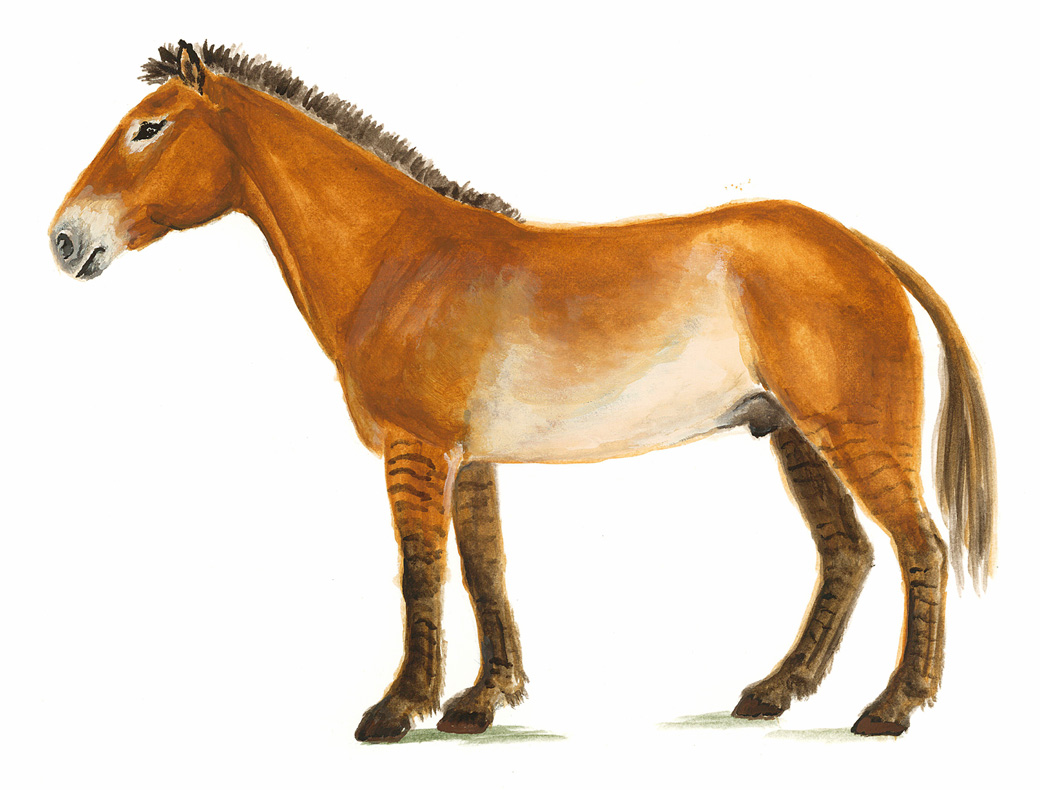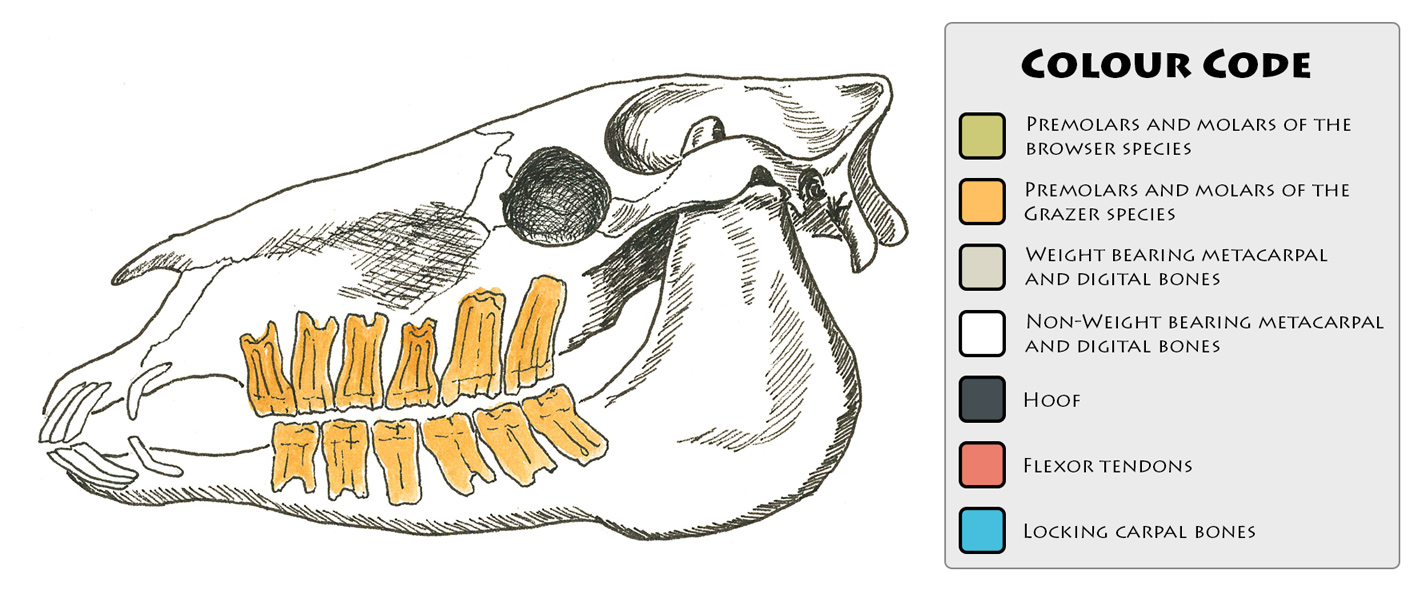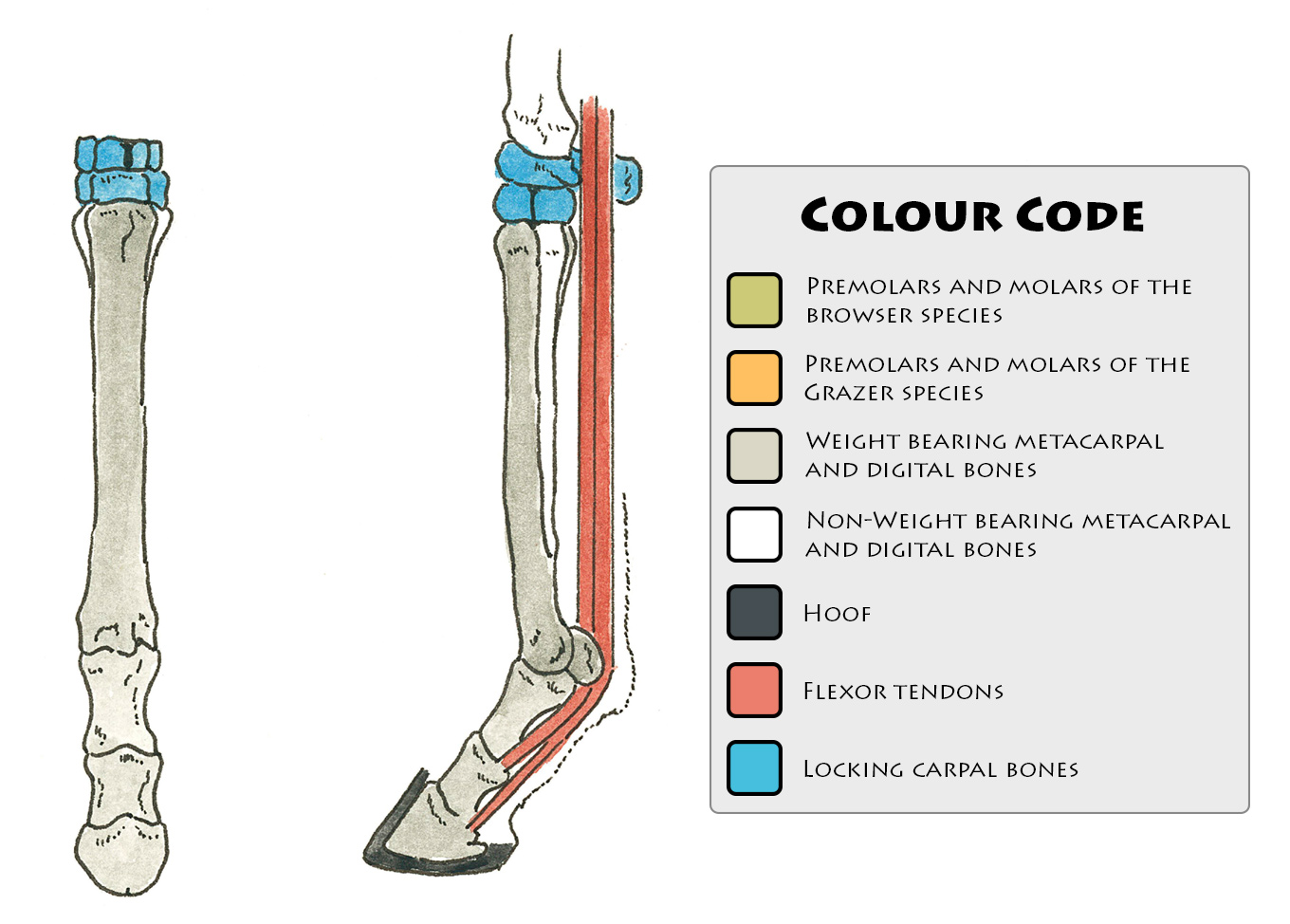 Name: Dinohippus
Name: Dinohippus  Name: Dinohippus
Name: Dinohippus Dinohippus is believed to be the last direct ancestor of Equus, the family that includes today’s horses, asses and zebras. It was a grazing animal in North America about 13-5 million years ago. This species had a shallow depression in the skull in front of its eyes. The function is not known but it could have been for muscle attachment or some have suggested it could be the location of glands.
 Dinohippus is the first horse that shows evidence of the passive “stay apparatus” an anatomical feature that is well-formed in Equus.
Dinohippus is the first horse that shows evidence of the passive “stay apparatus” an anatomical feature that is well-formed in Equus.
The stay apparatus is an important “safety” feature as it helped the horse to stand for long periods of time with less energy use. So, this was one of the first horses that could sleep while standing!
 An interesting feature of Dinohippus is that there was a variation in the numbers for toes in this group.
An interesting feature of Dinohippus is that there was a variation in the numbers for toes in this group.
Some fossils in Nebraska had three toes, but in other areas individuals had one toe.